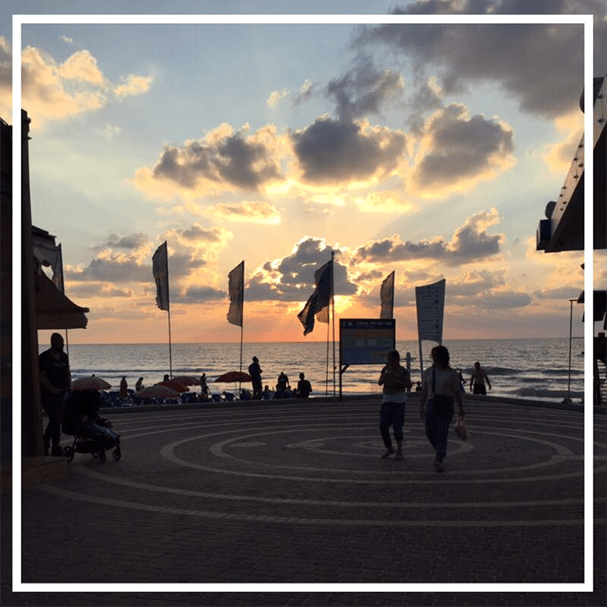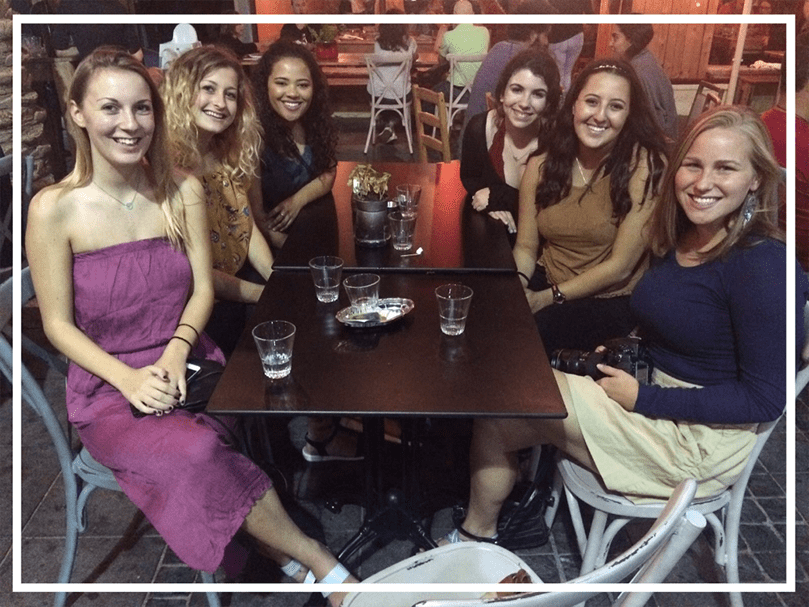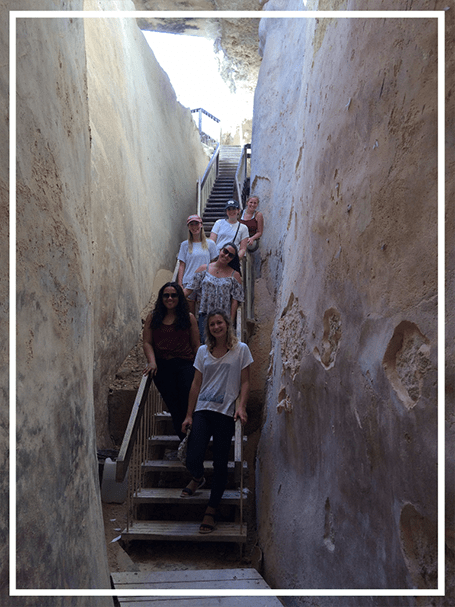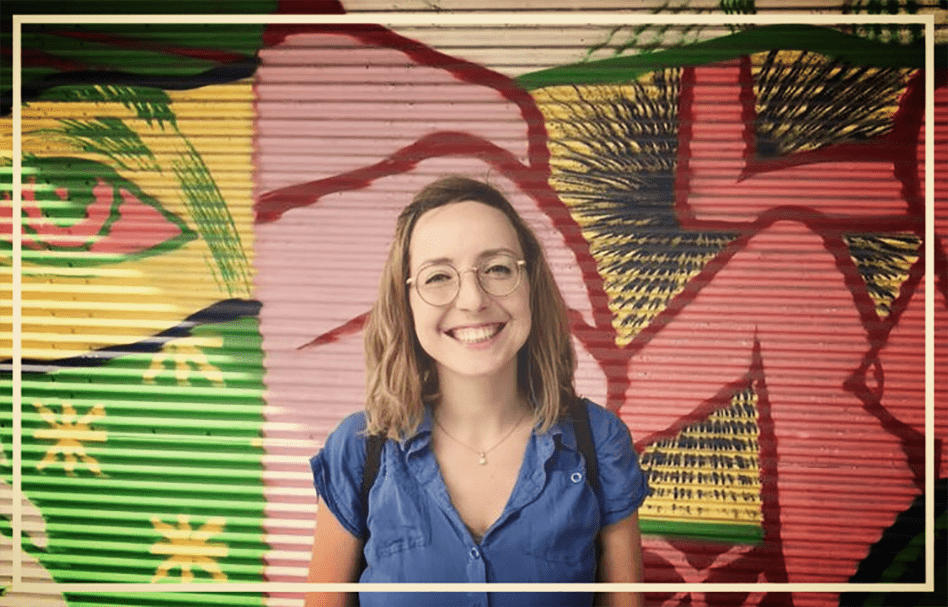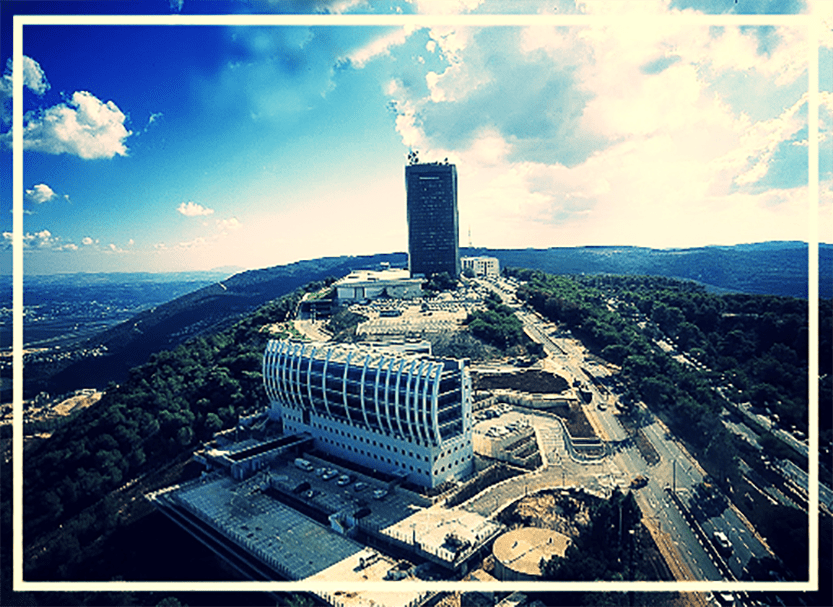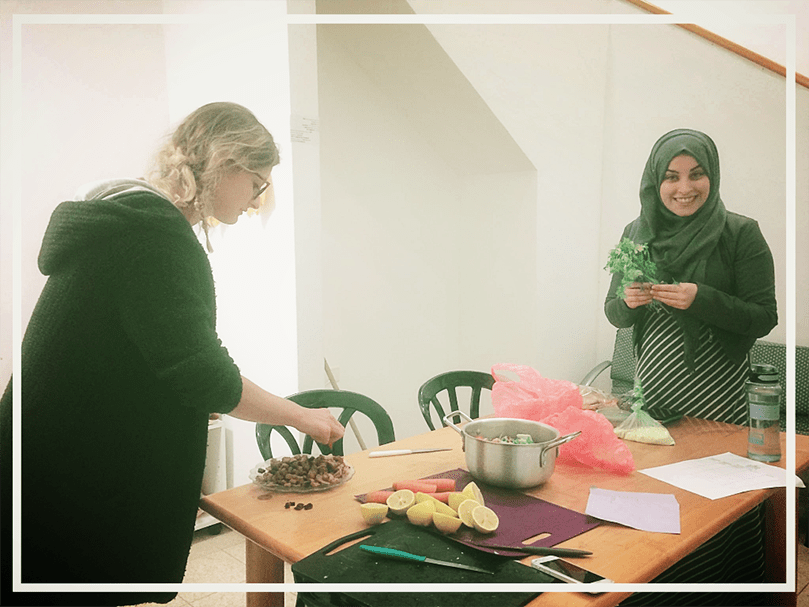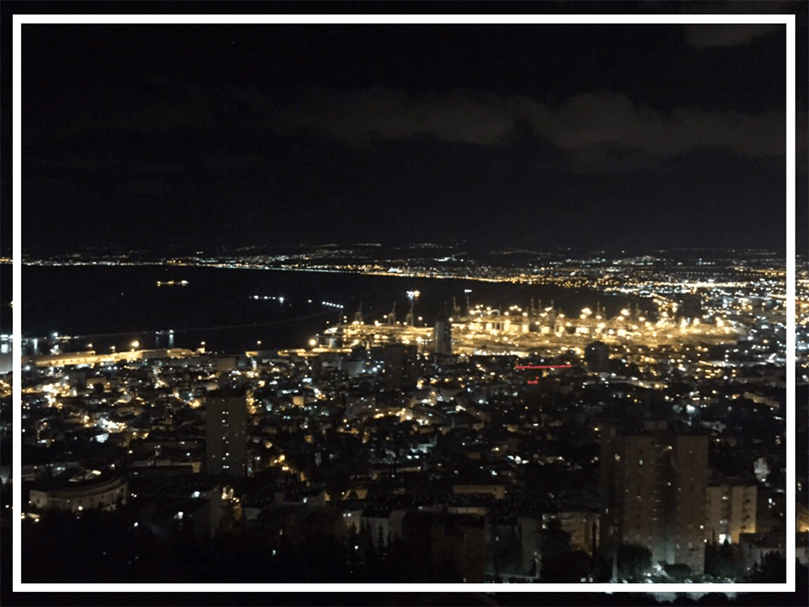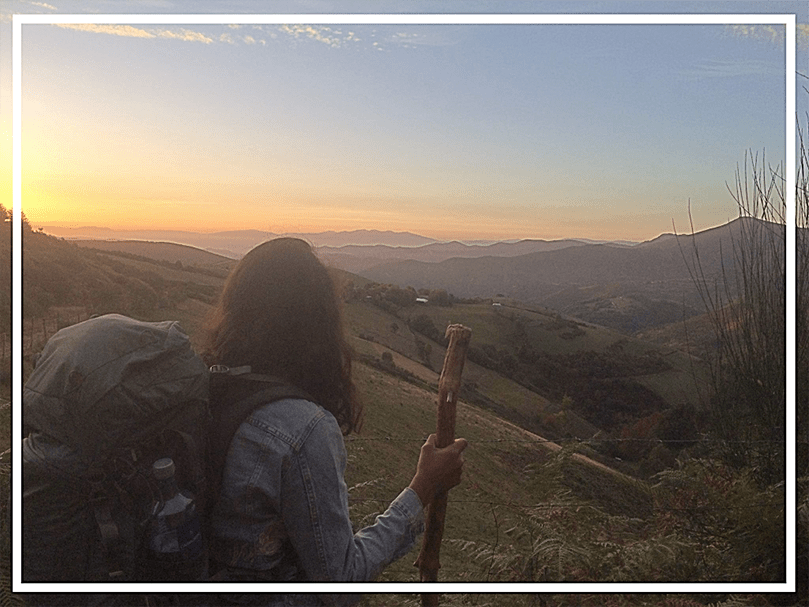Fall 2017 Newsletter, ISSUE I
A word from the director:
Even though the fall season in Israel is not as vividly colorful like the foliage in colder countries (most of the trees here are ever-green), and some people even go as far as claiming that there is no such thing as an “Israeli Fall”, this period of the year in Israel always seemed like a magical time to me! Especially the first rain, which is called “Hayoreh”. The Yoreh with its unique scent washes all our streets and irrigates our fields and it symbolizes the end of the hot, dry summer.
Fall symbolizes many other beginnings, like the beginning of the school year and the beginning of the Jewish year in Rosh Hashanah. In addition, it announces the arrival of our new group of students!
This year our students arrived at the last day of the Sukkot holiday, which is called Simhat Torah (the joy of the bible) and thanks to this special timing, they got a chance to visit a big local festival in Haifa: the International Film Festival!
Our students turned out to be avid travelers, hikers, and music lovers!
This first issue will include a blog entry about our orientation by our Fall student (and aspiring lawyer) Liran Koropitzer; an introduction to our intern, Aisha Yassin, who is in charge of the SAWA club; a poem about a stormy evening by Amir Gilboa; and a favorite local recipe that was prepared by one of our teams in the SAWA cooking event!
May this fall be full of wonderful adventures, meaningful conversations and ever-expanding horizons!
Yours truly,
Martha Shtapura-Ifrah
Director, CIEE Haifa
The start of something new by Liran Koropitzer (Fall 2017 CIEE student)
I hate to begin with such a cliché but it’s true, your first day studying abroad is the start of something completely new.
Our CIEE study abroad journey began at the airport. Our fabulous Resident Director Martha, picked us all up and brought us to an absolutely adorable hostel in downtown Haifa. The next three days became some of my best days ever spent in Israel. We went straight into things and our adventure of lifetime was jumpstarted. Now, unlike the others on our program this semester, I have a unique perspective on studying abroad in this specific location: I, am in fact, a citizen of this thriving nation. Now you’d think having been to this country before and speaking the language would make this transition seamless, but you’re wrong. There’s a difference between coming to visit your family for a couple weeks during summer vacation and living here. For example, I had no clue how to even get to a grocery store – no food = no survival. Luckily for me, an amazing Resident Director was waiting for us to answer any questions we had, no matter how minor, such as “what cleanings supplies do I buy?” Her orientation provided us with a crash course and supplied us with vital knowledge about the country we would call home for the next few months. Not only did we gain knowledge during these three days, but we also made memories and bonded with the other students in the CIEE program.
Some of the highlights of the orientation include: local, authentic meals, visiting and touring the ancient city or Tzipori and all the mind-blowing archeological sites that go along with it, checking out the city-wide film festival, meeting and listening to a refugee who’s family had been displaced from their home in 1948, getting to pick (and snack on) our own produce from a local farm, and finally, exploring the streets of our beautiful new home.
Besides all the benefits I have already mentioned, it was also advantageous that we arrived for our CIEE orientation a few days before the other international students arrived. Our early arrival allowed us to get acclimated to the weather and time zone whereas the other students began classes the day immediately after which the majority of them landed in Tel Aviv. Imagine going to classes with jet lag, let me tell you, it’s not fun.
All in all CIEE has given us a great foundation to begin our journey and I can’t wait to see what comes next. Here’s to the next couple months, and the start of something new.
Meet our intern- Aisha Y. Yassin:
Aisha is a third year student, majoring in English and part of the Ofakim Honors program in the University of Haifa. She speaks Arabic, Hebrew and English fluently (and has some knowledge of Spanish!). among the many things she does, like leading youth engagement programs in school and in community, she has also been part of our CIEE team as an intern! Aisha is involved in many different tasks, including finding interesting events and ideas for our program’s activities, writing, creating marketing material and more. But most of all- Aisha is the woman behind our language partnership program, also known as SAWA (together in Arabic). We asked Aisha to share with us a bit of her experience and motivation to join CIEE.
“As an outgoing person, it was natural for me to meet many international students during my first years at the University. Through these students I got to know more about the CIEE program. Since I enjoyed listening to people, sharing my language and culture, and seeing the benefit of having more students on campus to meet other students, I started the SAWA club. This club is one step closer to my goal to connect the world together, to offer a nuanced picture of reality here, and to have great time. Moreover, working with CIEE has been really great, because it provided a fertile soil for ideas, and welcomed initiatives with a lot of enthusiasm and support and helped make them come true. My dream is to learn constantly about the world, to see the beauty beyond boundaries and languages, and to help lessen the misery in this world. “
It's been really great to have Aisha on board with us here!
A poem by Amir Gilboa (1984-1917)
Gilboa was a renowned Israeli poet. He was born in Ukraine and immigrated to Israel when he was 20. Gilboa was awarded the Israel Prize for literature in 1982.
The following poem is called Erev Sufa, which can be translated as the Evening of the Storm or Stormwind Evening.
(English translation follows)
ערב סופה
ועוד השמש מווריד את חזיתות הבתים
באור של חיוכי ילדים
של דגלי נוער
של כרזות חג
באור של קולות מעטים
בתוך חשרת דממה מעיקה
טרם שוב יכה
Stormwind Evening
Translated by A.Z. Foreman
And still the sun reddens veins on the fronts of houses
With the light of children's smiles,
Of youth's banners,
Of holy day proclamations,
With the light of a few voices
In a gathering of oppressive silence
Before the lightning strikes once more.
Cultural flavors: Traditional Fattoush salad
Last week we hosted a special cooking event with our students and volunteers from the university, all of which are part of the SAWA club!
We thought it would be a good opportunity to get better acquinted with each other as well as some of the local foods. One of the dishes that was voted “tastiest” was the Fattous Salad. The salad was prepared by the lovely Abby Prince and Huda Hassan !
Fattoush is a popular Lebanese and Palestinian salad, known for its nutritious values and its easy-to-prepare recipe. The name of the salad is believed to be derived from the Arabic fatt "crush" and the suffix of Turkic origin -ūsh. Some claim that the roots of the Fattoush salad can be traced back to Lebanon at the end of the 19th century: as the Maronite Christians were fleeing from the numerous attacks committed by the Druze in Lebanon, a family arrived to the city of Zuhle, to the household of the Fattoush family. It was Easter, and in keeping with lent, the Christians did not eat meet. Instead they ate salad. One of them started eating salad with bread (which was pretty unusual), and the “Fattoush” salad was born.
Now that you know a little about its past, it’s time to make your own fattoush salad!
What will you need?
- 1 tablespoon vegetable oil for frying
- 2 small (4 inch) pita breads, torn into pieces
- 1 large English cucumber, finely diced
- 3 cups halved grape tomatoes
- 1/2 red onion, finely diced
- 3/4 cup chopped Italian parsley
- 3/4 cup chopped fresh mint
- 2 tablespoons extra-virgin olive oil, or to taste
- 1 tablespoon fresh lemon juice, or to taste
- 1 teaspoon ground sumac, or to taste
- 1 clove garlic, crushed (or more to taste)
- salt and freshly ground black pepper to taste
- 1 ouncsheep's milk feta cheese
What do you do once you have all the ingredients?
-
- Heat vegetable oil in a large skillet over medium-high heat. Place pita pieces into the skillet without crowding. Fry in batches until golden brown and blot dry with paper towels.
- Combine cucumber, tomatoes, red onion, parsley, mint, olive oil, lemon juice, sumac, garlic, salt, and ground black pepper in a bowl. Gently toss salad with fried pita pieces. Grate feta cheese on top using a small cheese grater.
- Enjoy!
Related Posts

Best Time to Buy an International Plane Ticket to the Middle East
Just because you want to study abroad in the Middle East doesn’t mean your plane ticket has to break the bank. There are ways to maneuver through the many travel... keep reading
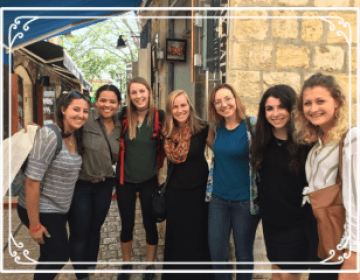
Our Trip to Safed and the Jordan River
by Abby Prince “Shalom Aleichem, mal’achei hasharet, mal’achei elvon” were the words that we heard blasting from the stereo as we pulled over to the side of the road to... keep reading
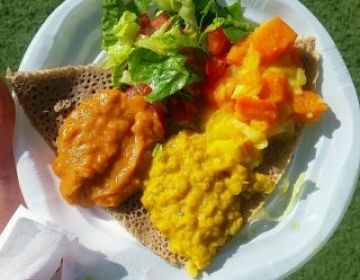
10 Things Every University of Haifa International Student Must Know
by Anna Spoerre You know those views that stop you in your tracks? Well here at the university your walk to class every day will be just that. The scene... keep reading
